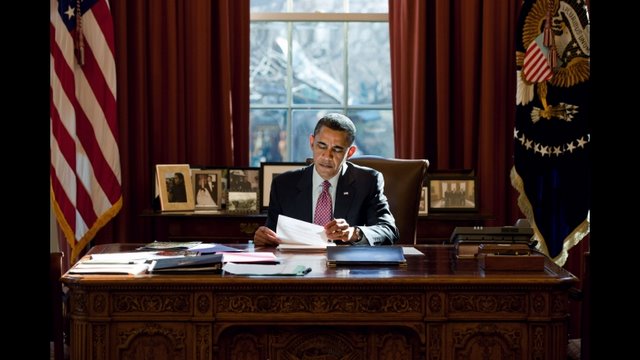The Construction Industry Discusses the President’s 2012 Budget (Video)
Launching what promises to be a combative and lengthy budget process, President Barak Obama on Monday unveiled a $3.7 trillion spending proposal he said will make painful cuts to reduce the federal deficit while financing investments in research, education and transportation. House Republicans have already proposed more extensive cuts for the final seven months of the 2011 budget year and have denounced the proposal as inadequate. Everyone has an opinion on how to tweak the President’s 2012 budget, and here are a few from our industry.
The Association of Equipment Manufacturers
Statement of Dennis Slater, President
“President Obama’s transportation budget proposal is a good start, as it recognizes that rebuilding and modernizing roads, bridges and other critical infrastructure would create American jobs and make our nation more competitive with other countries. Unfortunately, however, the proposal falls short by not addressing the crucial issue of how this essential infrastructure investment will be funded, putting in question whether it will ever be approved.
“A long-term transportation policy for the country requires both bipartisan leadership and action. We hope that the budget released yesterday by the White House is an indication that President Obama intends to provide that leadership, and America’s equipment manufacturers stand ready to help. Repairing unsafe roads and bridges and building a surface transportation framework that creates jobs and makes America more competitive is an urgent national priority that cannot wait.”
The Associated General Contractors of America
Statement of Stephen E. Sandherr, CEO
“It is encouraging to see that the President appreciates the difference between wasteful spending and essential transportation investments needed to boost overall economic growth and protect Americans from later, larger fiscal liabilities. After all, businesses rely on an efficient transportation system to successfully compete in the global economy. Meanwhile, investing in needed capacity and maintenance projects now protects taxpayers from having to pay much more to repair broken roads and bridges in a few years.
“We are, however, concerned by the Administration’s proposal to transform the Highway Trust Fund into a Transportation Trust Fund that would fund high speed rail, Amtrak, “livability” grants and other Administration priorities. The Administration promises to use existing gas tax and other revenue sources only to continue funding highway and transit projects. However, it is hard to take this proposal seriously when the Administration has yet to identify how it will pay for the other programs it wants to add to the Trust Fund. This portion of the proposal appears more like an effort to obscure overall spending levels than to actually create a viable new role for the Trust Fund.
“More broadly, the Administration’s and House Republicans’ proposals to cut billions from clean and drinking water programs, waterway maintenance, airport improvements and public building upkeep will undermine long-term efforts to reduce the federal deficit. That is because repairing broken water mains, dredging silted-over ports and fixing out-of-service locks will cost the federal government far more than investing in needed maintenance would today. Worse, the decline in business activity and lost jobs such infrastructure breakdowns cause would serve as a drag on economic growth.
“We understand and strongly support the need to cut spending and reduce the federal deficit. That is why we will be working over the coming weeks and months to help Washington officials make the kind of reforms and spending cuts that reduce both short-term spending and protect Americans from long-term financial liabilities. The last thing we should do is hand taxpayers a large long-term bill to pay for small, short-term cuts.”

Statement from Dr. David Michaels, assistant secretary of labor
“I think we can all agree that the American economy must succeed but never at the cost of the safety or health of American workers. OSHA’s goal is to ensure that everyone who goes to work returns home safely. I think we can also agree that the size of a business should not determine the level of protection that a worker receives. All workers have the same right to a safe workplace.
“Despite concerns about the effect of regulation on American business, there is clear evidence that OSHA’s commonsense regulations have made working conditions in this country today far safer than 40 years ago when the agency was created, while at the same time protecting American jobs. The truth is that OSHA standards don’t kill jobs. They stop jobs from killing workers. OSHA standards don’t just prevent worker injuries and illnesses. They also drive technological innovation, making industries more competitive.
“Many OSHA standards cost little and easily can be adopted by employers with nominal effect on the bottom line. OSHA, by law and by practice, always looks at both the overall cost of compliance with a proposed regulation and at the expected benefits. The evidence shows that OSHA generally overestimates the cost of its standards. Congress’ Office of Technology Assessment, comparing the predicted and actual costs of eight OSHA regulations, found that in almost all cases ‘industries that were most affected achieved compliance straightforwardly, and largely avoided the destructive economic effects’ that they feared. Standards intended to protect workers from cancer-causing chemicals such as vinyl chloride and ethylene oxide were shown to not only protect workers but also to increase productivity. OSHA’s trenching standard has significantly cut the death rate for construction workers, and OSHA’s bloodborne pathogens standard has almost eliminated work-related cases of hepatitis B and HIV.
“The failure to issue sensible regulations endangers not only workers’ health and safety but also hurts American competitiveness. For example, because OSHA has a weak noise standard and weak enforcement, U.S. employers have no incentive to buy modern, quieter machines, which means that U.S. manufacturers don’t build them, and there are few jobs in the U.S. for engineers who could design them. A recent study by the National Academy of Engineering concludes that European manufacturers are way ahead of us in designing and building modern, quieter machinery. Today, when businesses anywhere in the world want to buy quieter equipment, they look not to the United States but to Europe.”
White House Video
In this White House White Board video, Jack Lew, director of the office of Management and Budget, explains how the President’s Budget will help the government live within its means, while still investing in America’s future.


Comments are closed here.